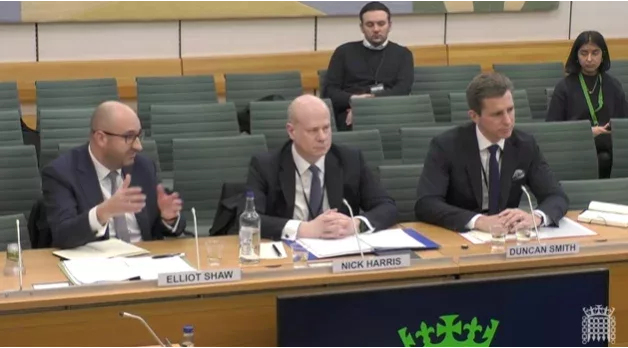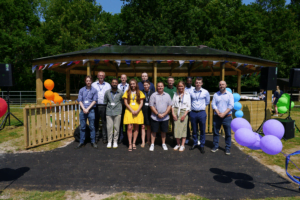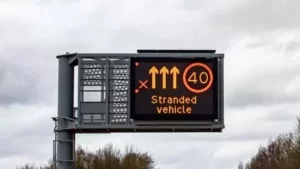The Chief Executive of National Highways has explained that plans to improve safety on smart motorways have been implemented, and that statistics show they are as safe or safer than conventional motorways.
Answering questions at the Commons Transport Committee, Nick Harris pointed to additional signage, information campaigns and stopped vehicle detection technology, and said the government-owned company is on target to deliver on 151 additional emergency refuge areas within strict timescales.
Mr Harris said he visited a site on the M6 to find out how the delivery was being achieved and said he is confident he will deliver by the end of the target period. Need to plan the right places to put them, make sure they are built in areas where they can be efficiently delivered with minimum disruption.
“We know where we need to build them, our planning is very advanced and I’m confident that we will hit the target within the timetable that we’ve committed to,” he said.
Questioned on the safety difference between conventional and smart motorways, there was a suggestion from the committee that all lane running motorways are three times more dangerous for KSI incidents.
“When will we get to point when we can have clarity on what is the safest form of fast-moving highways that the public can have confidence in,” he was asked.
“Our motorways are some of the safest in the world so we are talking about safe roads by international comparison,” Mr Harris replied. “I understand that collisions involving stopped vehicles remain a key concern which is why we have continued to work on additional safety. Overall they are the safest roads, and are not three times less safe than conventional roads. Most crashes are moving vehicle collisions, but what has increased is a very small risk of a collision between a moving vehicle and stopped vehicle and there are more, statistically, on A roads and conventional roads than smart motorways.
“Our analysis that has been checked by Office of Rail and Road and Department for Transport, but our data that has been analysed before safety improvements have been made in the last year so we are constantly checking the data. So it’s statistically safe but there is still the perception challenge.”
Supporting Mr Harris, Executive Director for Operations at National Highways Duncan Smith told the committee that 96% of crashes on smart motorways involve moving vehicles, and, while smart motorways are overall safer, that the only time when statistics suggest smart motorways might be less safe is for the very rare cases of stopped vehicles.
“Collisions between moving vehicle and stop vehicles happen on all roads, and it’s actually more prevalent on A roads on all lane running smart motorways,” he said. “If you have a blowout and you want to change a tyre, we have emergency areas which are vastly safer than the hard shoulder, which is why we’re building the additional emergency areas. The other is if it does happen, we’ve now got the stopped vehicle detection system and we see something like 2,200 stopped vehicles a month because of the technology we’ve got in place, so we can do something about that and protect those stopped vehicles.”
Mr Smith reiterated that traditional hard shoulders are far from places of safety. “I’d encourage anyone listening to this that motorways are hazardous places so get to an emergency area,” he continued. “For most breakdowns, the car is capable of limping the half a mile to the nearest emergency area. So that would be my strong encouragement in that case. It is not safe to change a tyre on a live motorway – get to an emergency area or junction if there is one.
“Stopped vehicle protection, is a great tool, but it’s not the only way that we’re aware of vehicles stopping,” explaining people call emergency services, there are traffic operations and CCTV cameras, and this can lead to warning signs being set.
He then explained that targets for for traffic officers to reach stopped vehicles are now being hit: “As a result of our stocktake we committed to attending to those stopped vehicles within 10 minutes, and I’m pleased to say that now we’ve achieved that target every month for the last 13 months. It’s now become business as usual for us to achieve that level of performance.” Mr Smith then agreed that while ten minutes is a long time but underlined: “If you’re in those situations, which is why the cameras will pick them up, signs behind that vehicle automatically set to alert drivers that are coming to encounter, and speed limits will be will be set automatically. So there’s a range of measures that are in place to protect those vehicles.”
In the hearing, Mr Harris, Mr Smith and Chief Customer and Strategy Officer, Elliot Shaw, discussed a range of issues around National Highways.
They talked about “good progress” on safety and resilience, how through RIS2 they have delivered 21 schemes that are open to the public with another 17 in progress, but that there have been delays due to legal challenges against schemes such as the A303 at Stonehenge and the Lower Thames Crossing where they have had to wait to get Development Consent Orders.
They also discussed how they are undergoing a programme of technology replacement to deal with sensors, cameras and servers, some of which are 40 years old. They pointed to improvements in efficiency, pointing to schemes such as one which keeps the Orwell Bridge open more often during strong winds, and mitigation against pollution.
(Picture – Elliot Shaw, Nick Harris and Duncan Smith, from ParliamentLive TV)





















